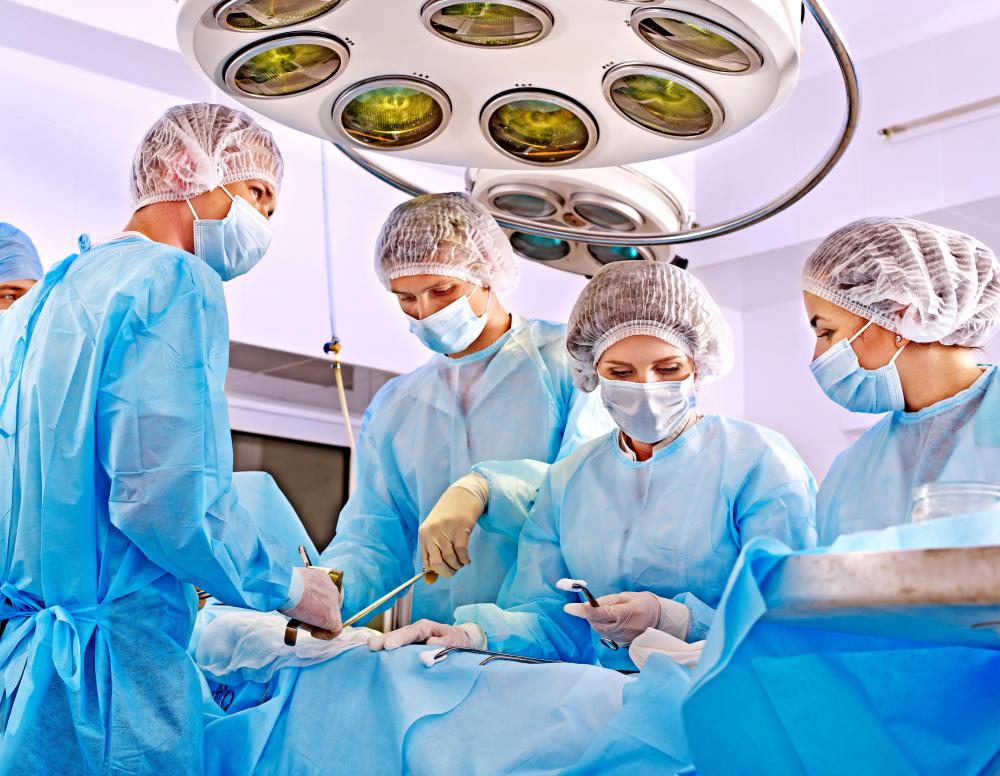At TheHealthBoard, we're committed to delivering accurate, trustworthy information. Our expert-authored content is rigorously fact-checked and sourced from credible authorities. Discover how we uphold the highest standards in providing you with reliable knowledge.
What is Surgical Drainage?
Surgical drainage is a method used to keep a surgical wound clean. After surgery, a small tube is inserted into the wound. This tube will keep the area free from blood, pus, and other bodily fluids that can cause infections. Surgical drainage can be administered for a few days or a few weeks, depending on the surgical procedure. The fluids are typically measured to make sure the wound is healing properly.
These drainage procedures are used for several types of surgical wounds. Different types of drainage tubes are also used. For example, following a breast cancer tumor removal, a Jackson-Pratt or grenade tube is inserted into the wound. A suture or stitch is used to hold the tube in place and any accumulating fluid can be easily removed from the wound.

Surgical drainage can also be used after dental surgery. Following the removal of a mandibular molar, a tiny tube is placed into the empty socket. This is done to keep the wound irrigated until it fully heals. It reduces any pain or swelling around the wound site and shortens the recovery time. This type of surgical drainage tube is typically removed within two days.

A urinary catheter is sometimes used after certain surgeries as a form of surgical drainage. They are usually used after a gynecological surgery to allow an area to heal without urine contamination. The catheter or tube is placed inside the urethra and into the bladder so that urine can flow out of the body through this tube. This also reduces the chance of an infection and speeds up the recovery time.
Abscesses are pus-filled hardened lumps that appear under the skin. These lumps are often drained, but occasionally the abscess with fill up with fluids a second time. To fully eliminate the chance of recurrence, the epithelial lining of the wound is removed and a small tube is inserted to collect any fluids that can be left over. Abscesses are caused by bacterial contamination, so the removal of pus-like fluids is important for a full recovery.
After a certain amount of time, surgical drainage is no longer needed. X-rays as well as the amount of fluids being collected on a daily basis can determine when it is safe to remove the drains. It can be dangerous to keep a drainage tube in a wound for a long time. When this happens, the removal of the tube can be extremely painful.
AS FEATURED ON:
AS FEATURED ON:












Discuss this Article
Post your comments